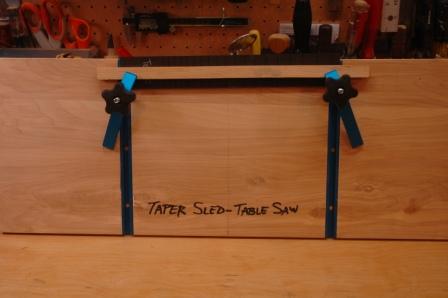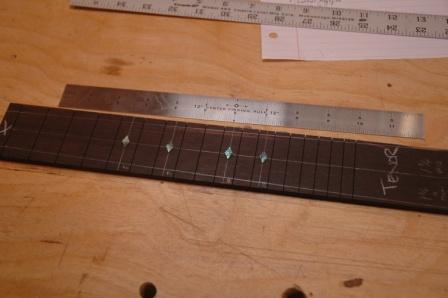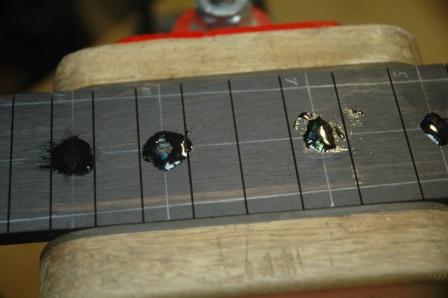October 3, 2010
Happy October everyone. I’ve been working on ukes this weekend, which means focus on jigs and such. I crafted a taper sled, which allows me to make taper cuts on the table saw. It’s just a slab of 3/4″ birch ply with two t-channels, channel clamps, and a guide strip on the back. Fingerboards need to be tapered, and after marking the taper line, clamp the fretboard into the sled and slide it through the table saw, and shazam!

Prior to doing the taper cut, I need to inlay the fret markers. I’m using diamond shaped paua. The fretboard is marked with a center line, and additional lines are scored at the 5th, 7th, 10th and 12th fret. Note that ukes don’t use the same fret marker patterns as guitars.
The shell is glued to the surface of the fretboard to allow for later scoring around the shell.

The shell is removed after scoring, then the cavity is cut out and black epoxy is added to the cavity. The shell is pressed in, and additional epoxy is glooped over the top to fill any gaps. After 24 hours, the fretboard can be sanded.

Looks funky now, but it’s like unburying treasure once you sand it down.



